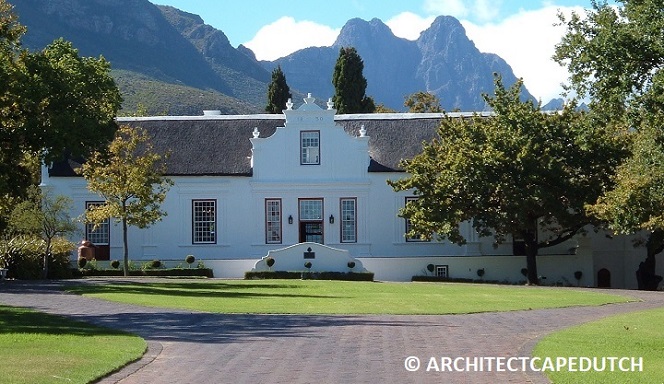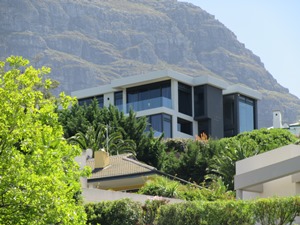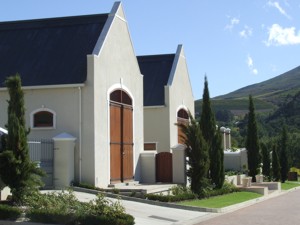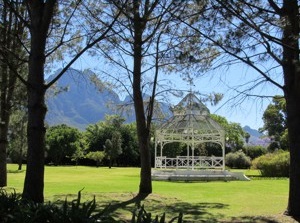CHARACTERISTICS OF THE CAPE DUTCH HOUSE STYLE
There are several common characteristics that define a building as being part of the style. This is a comprehensive list of the key features of almost all Cape Dutch buildings in South Africa.
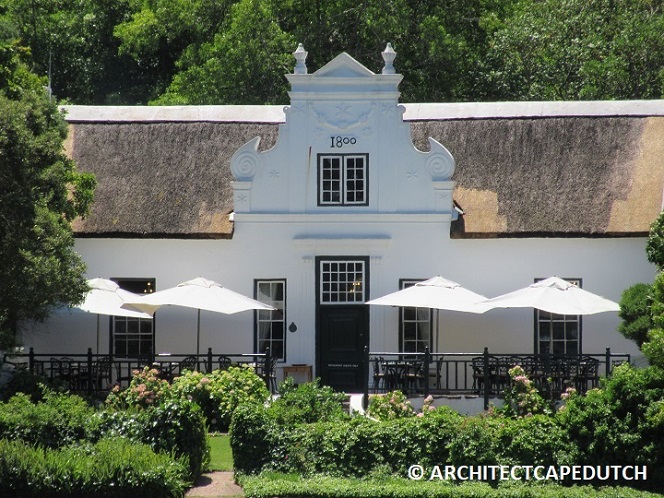
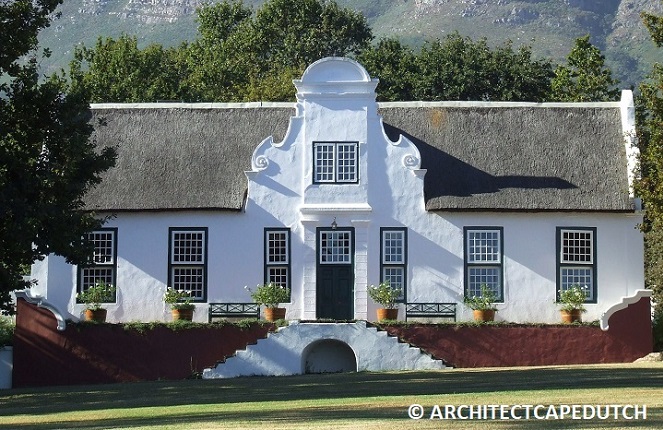

THATCH ROOF
The style began to emerge with the sliding sash windows in simple but elegant Palladian style buildings in the center of Cape Town, which looked very similar to the style of the Castle of Good Hope. Once the gable emerged the style was born.ELABORATE CENTRAL GABLE
The earliest gabled houses began to appear with advance of a parapeted section in the front of the facade known as the gable. The earlier gables had a profile of concave and convex arcs, with plaster bands that swirled in from the edges of these onto the front face of the gable. This was known as the baroque style.
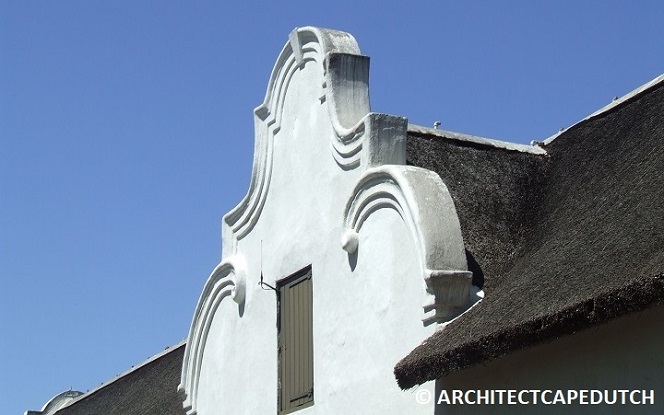

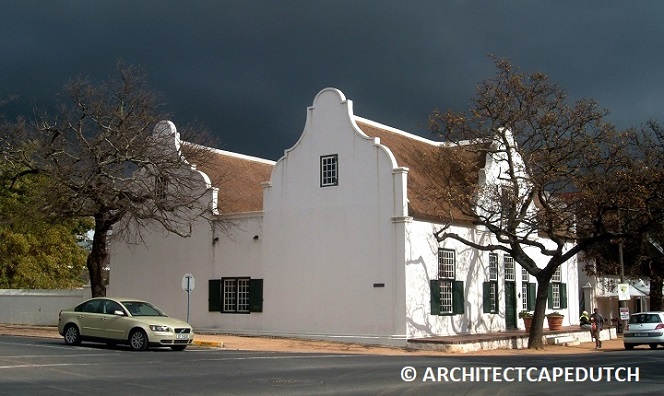
H-SHAPED LAYOUT
The earliest houses were T-shaped, with the living areas located in the front section and the bedrooms located at the back. It became the usual practice to add another wing to the back section creating the H-shaped layout which is most common layout.
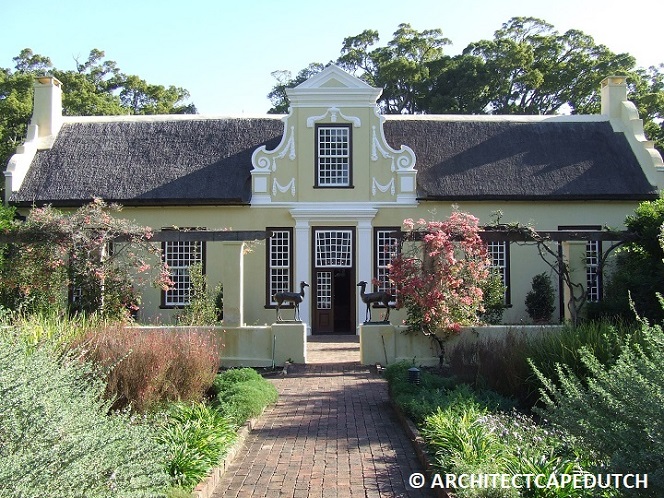
WHITE OR CREAM WALLS
Lime was used for cement and lime-washing the walls a pure white colour. As more paint colours became available some of the houses were painted cream, although white is still the preferred colour in the style.
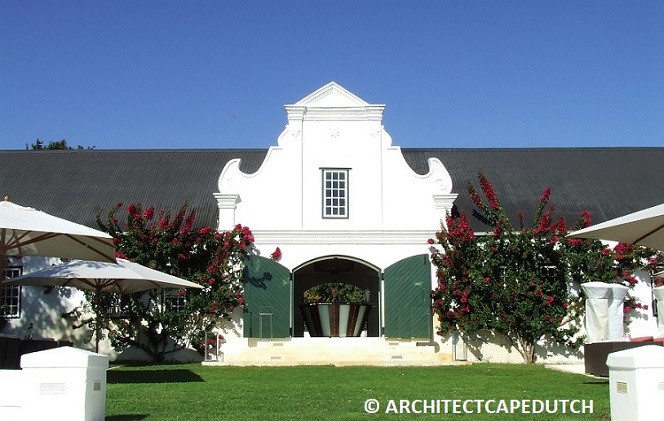
TIMBER SHUTTERS
The abundance of timber available growing on the Southern slopes of Table Mountain made it possible to add full lenght shutters to all the windows and doors, and the sliding sash mechanism of operating the windows is well suited to the addition of shutters.
LOW WERF WALLS
The low werf wall refers to the walls used to demarcate various parts of the farm for vegetable gardens and other purposes.
I became a powerful architectural tool to layer the spaces, wihout obscuring the views completely.

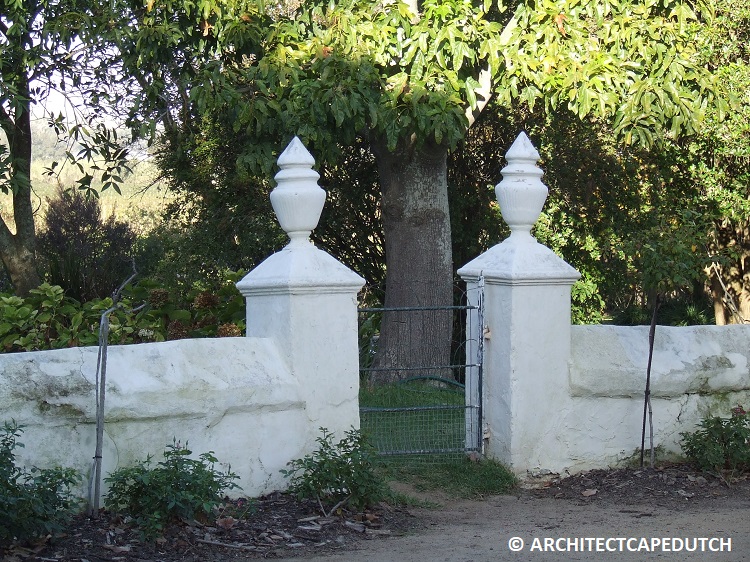

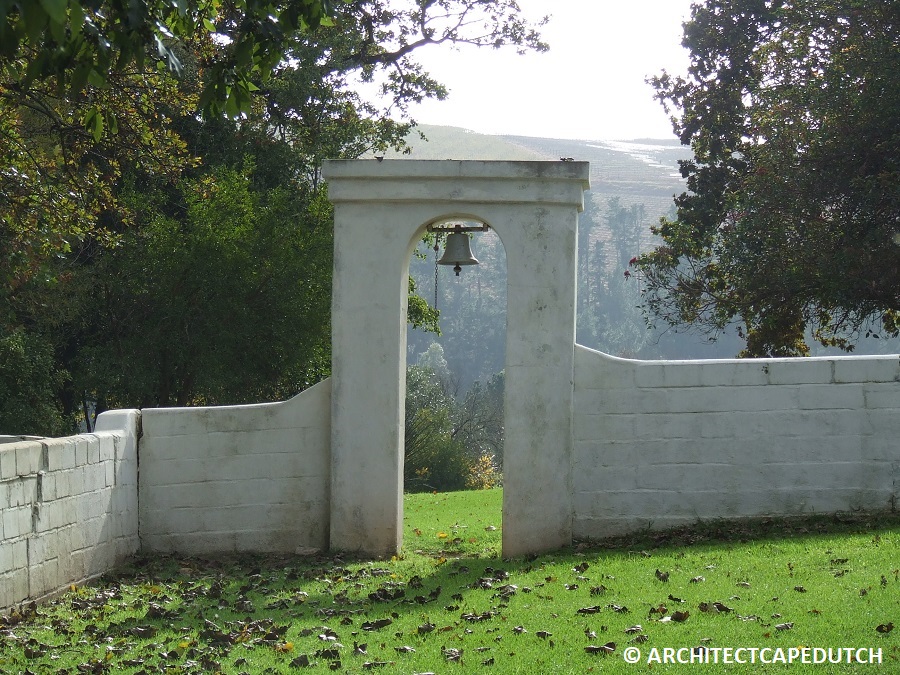
BELL TOWERS
Originally the bell tower emerged as a device to summon the slaves to work, but it become a decorative feature as well, and is used to ring wedding bells today at the many beautiful venues in the Cape that have the privilege of possessing one of these beautiful historical buildings.
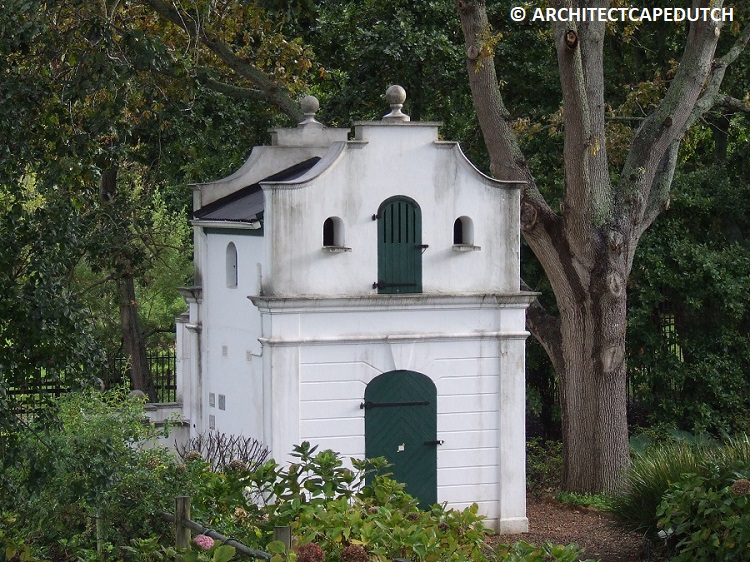
DOVECOT
The dovecot was used to house chickens and roosters. There are only three extant examples located at Alphen hotel, Heritage Park and Meerlust. The one shown here is from Alphen Hotel and is the smallest.
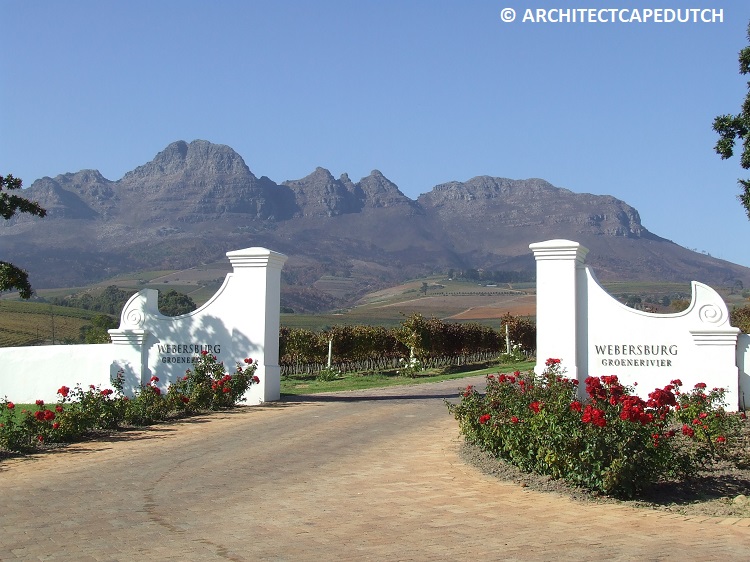
GRAND ENTRANCE GATES
Just as low werf walls demarcated the gardens surrounding the manor house, so the grand entrance gates were flanked by curved symmetrical walls unique to the farm and creatinga signature at the entrance.
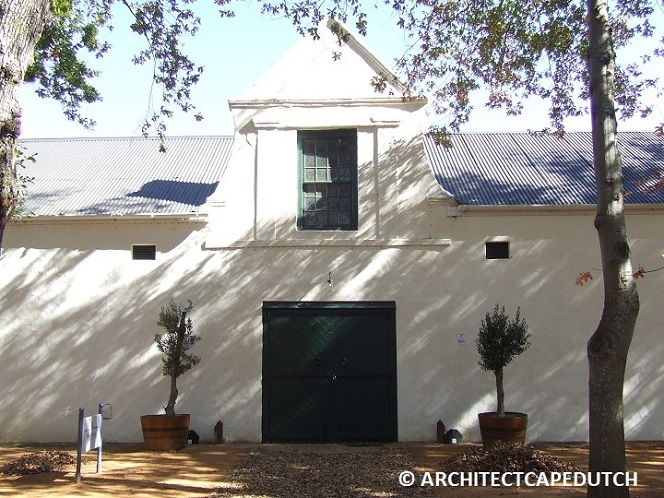
OUTBUILDINGS
The manor houses were very seldom built in isolation but formed part of a group of outbuildings, often with simpler gables echoing the style of the main home. These were used for store rooms, wine cellars and slave quarters.
MORE ON CAPE DUTCH GARDENS
Cape Dutch gardens make use of hardy indigenous plants that compliment the architecture. Read more by clicking on the link.
